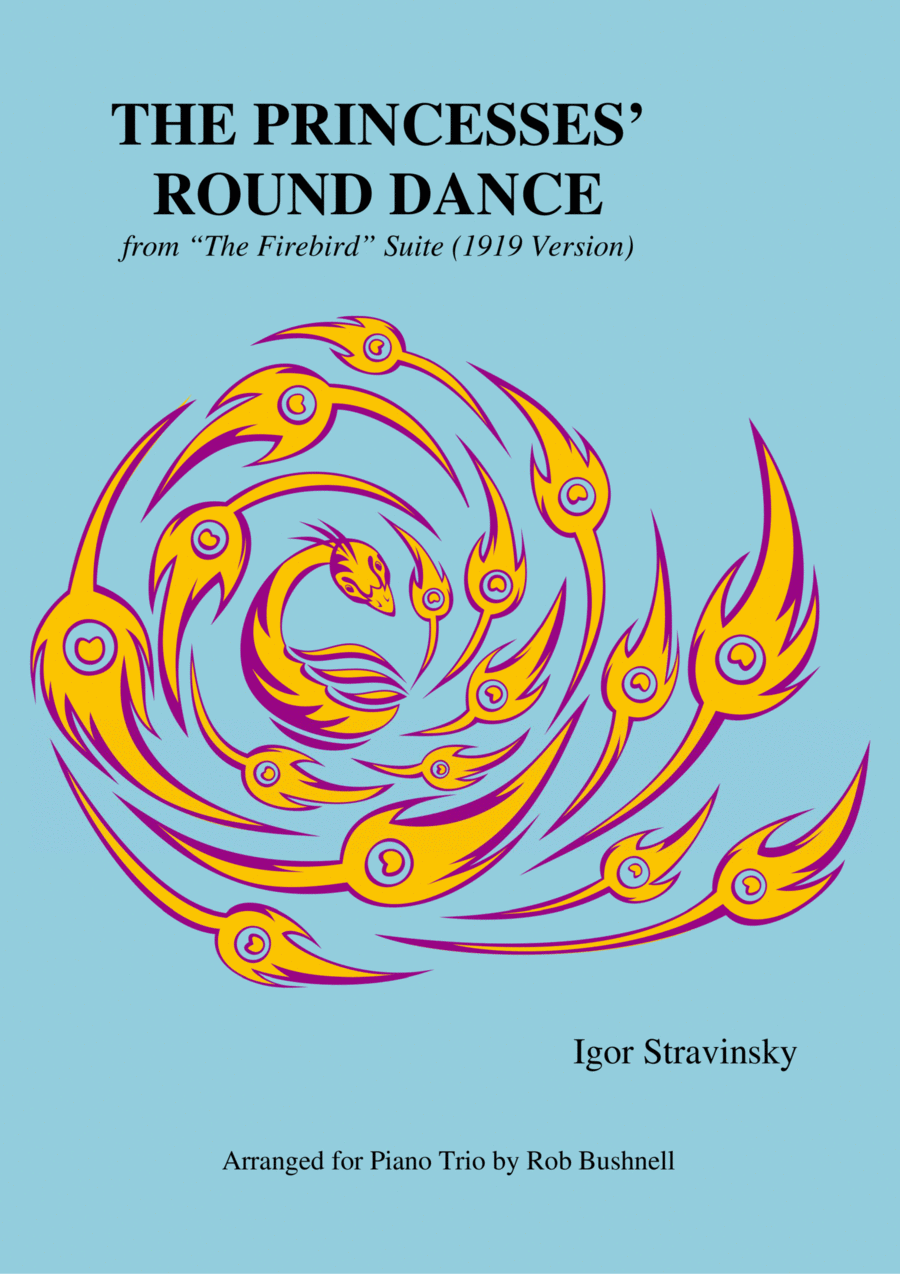Piano Trio,String Ensemble Cello,Piano,Violin - Level 4 - Digital Download SKU: A0.752437 Composed by Igor Stravinsky. Arranged by Rob Bushnell. 20th Century,Classical,Contemporary,Romantic Period. Score and parts. 12 pages. RBMusic #6294559. Published by RBMusic (A0.752437). The Firebird suite, by Russian-born composer Igor Stravinsky, is based on his 1910 ballet of the same name. It, in turn, is based on the Russian fairy tales of the Firebird and the blessing/curse it possesses for anyone who owns it. The ballet premiered at Opéra de Paris as part of Sergei Diaghilev's Ballets Russes company and was an immediate successful, bringing Stravinsky international fame. The ballet tells the story of the journey of Prince Ivan. He strays into the realm of the evil Koschei, whose immortality is preserved by keeping his soul in a magic egg. Ivan is about to kill the Firebird but is spared. As a token of thanks, she offers him a feather that can be used to summon her should Ivan be in dire need. Prince Ivan then meets princesses who are under Koscheiâs spell, falling in love with one of them. After confronting the magician, Koschei sends his minions after Ivan, who summons the Firebird. She intervenes and bewitches the monsters. Exhausted, the creatures and Koschei then fall into a deep sleep. Ivan is then directed by the Firebird to the egg containing Koschei's soul, which Ivan destroys, freeing all those under his spell. Ivan and the princesses celebrate their victory. The music features in Disneyâs Fantasia 2000. This arrangement of The Princessesâ Round Dance is for piano trio (violin, violoncello and piano). Great as background music or as a concert item in its own right. A recording of the music from the original soundtrack can be found on YouTube: https://www.youtube.com/watch?v=4U5xhOISyvA. Other searchable terms: L'Oiseau de feu, ÐаÑ-пÑиÑа, The Princessesâ Round Dance, Rondo, Khorovod, Suite 1919, 1919 Version, Ronde, Khorovode, Ð ÐÐÐÐ, Ð¥ÐÐ ÐÐÐÐ, ÐÐ ÐÐЦÐСС, ÐЮÐС 1919 Ð., ÐÐРСÐЯ 1919 Ð., Rise of the Guardians, New York Philharmonic Young People's Concerts
